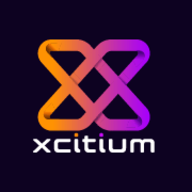

Find out what your peers are saying about CrowdStrike, SentinelOne, Microsoft and others in Endpoint Detection and Response (EDR).


Elastic Security combines the features of a security information and event management (SIEM) system with endpoint protection, allowing organizations to detect, investigate, and respond to threats in real time. This unified approach helps reduce complexity and improve the efficiency of security operations.
Additional offerings and benefits:
Finally, Elastic Security benefits from a global community of users who contribute to its threat intelligence, helping to enhance its detection capabilities. This collaborative approach ensures that the solution remains on the cutting edge of cybersecurity, with up-to-date information on the latest threats and vulnerabilities.
Open EDR is a robust solution for real-time threat detection, monitoring, and response. Known for its effective identification of security breaches, it offers valuable insights for endpoint protection.
Open EDR provides comprehensive security coverage by ensuring endpoint protection across multiple devices. Its key strengths lie in automated response features and seamless integration with existing IT infrastructure. Users value its ability to deliver centralized visibility into network activities, customizable alerts, and detailed forensic analysis. Despite its powerful capabilities, some users report occasional system crashes and note that the setup process can be complex. Improvements in customer support, documentation, and resource management could enhance its overall performance.
What are the key features of Open EDR?Open EDR is highly valued in industries requiring stringent security measures, such as financial services and healthcare. Its comprehensive endpoint protection and automated response capabilities ensure critical assets remain secure, meeting the unique demands of these sectors.
We monitor all Endpoint Detection and Response (EDR) reviews to prevent fraudulent reviews and keep review quality high. We do not post reviews by company employees or direct competitors. We validate each review for authenticity via cross-reference with LinkedIn, and personal follow-up with the reviewer when necessary.